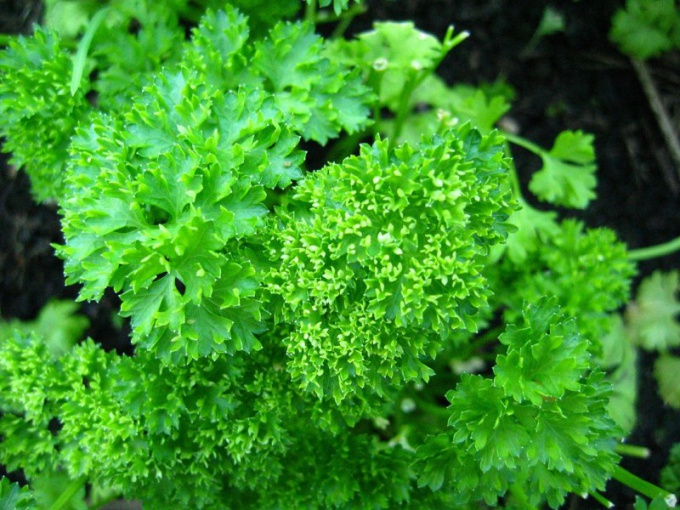It is no secret that the so-called mixed planting was practiced since ancient times by different peoples. The division of plants was as follows: main plant and plant-satellites, the main role of which was to ensure a favourable environment for the growth of first, protecting the soil from drying out and reproduction of weeds and harmful insects. This plant is notorious to all the beautiful parsley. Thanks to her, you can provide almost year-round harvest, protect the soil from such an undesirable one-sided depletion and maximize the impact of various horticultural crops on the taste of each other.
For example, joint planting strawberries, spinach and watercress, the edges surrounded by a frame of parsley, provide growers consistent sprouts and fresh greens throughout the summer season.
The combination of raised beds of onions, with the addition of radish seeds between planting carrots and the same of parsley provides an opportunity not only to collect a great harvest the first two crops, but leads to optimal development of the roots of the latter in the future.
If the spring on the foot bed properly distribute the crops of green so that one of the lines was Central, and the other is located close to the edge, in may, between the orderly rows of beds made ahead of time you can plant broccoli.
Gradual razresevanje greens as regrowth allows for additional planting iceberg lettuce.
The rule is to sow parsley after the harvest of tomatoes and potatoes. Collecting and using herbs, in the same place, spread onions, beans or tomatoes, this will avoid unnecessary exhaustion of the soil and to follow a scientifically sound principle of rotation. Parsley also contributes to the improvement of vineyards.
Planted between the rows of strawberry, she repels slugs, ants, aphids, detrimental impact on the rose, goes well with onions, carrots, beets, asparagus, strawberries, however, constitutes a bad neighborhood with cucumbers.
Parsley as a growth stimulant
For example, joint planting strawberries, spinach and watercress, the edges surrounded by a frame of parsley, provide growers consistent sprouts and fresh greens throughout the summer season.
Parsley is not only beautiful but also very useful. This is the only spicy grass, which does not lose properties during the heat treatment, the secret is in the special persistent volatile, which have a pronounced antiseptic properties.
The combination of raised beds of onions, with the addition of radish seeds between planting carrots and the same of parsley provides an opportunity not only to collect a great harvest the first two crops, but leads to optimal development of the roots of the latter in the future.
If the spring on the foot bed properly distribute the crops of green so that one of the lines was Central, and the other is located close to the edge, in may, between the orderly rows of beds made ahead of time you can plant broccoli.
Gradual razresevanje greens as regrowth allows for additional planting iceberg lettuce.
The natural nurse for the soil and plants
Parsley is famous for its abundance of vitamins, acids and minerals like potassium, magnesium, iron, and enzyme substances. It also contains inulin, which optimizes the content and exchange of glucose in the blood.
The rule is to sow parsley after the harvest of tomatoes and potatoes. Collecting and using herbs, in the same place, spread onions, beans or tomatoes, this will avoid unnecessary exhaustion of the soil and to follow a scientifically sound principle of rotation. Parsley also contributes to the improvement of vineyards.
Planted between the rows of strawberry, she repels slugs, ants, aphids, detrimental impact on the rose, goes well with onions, carrots, beets, asparagus, strawberries, however, constitutes a bad neighborhood with cucumbers.
